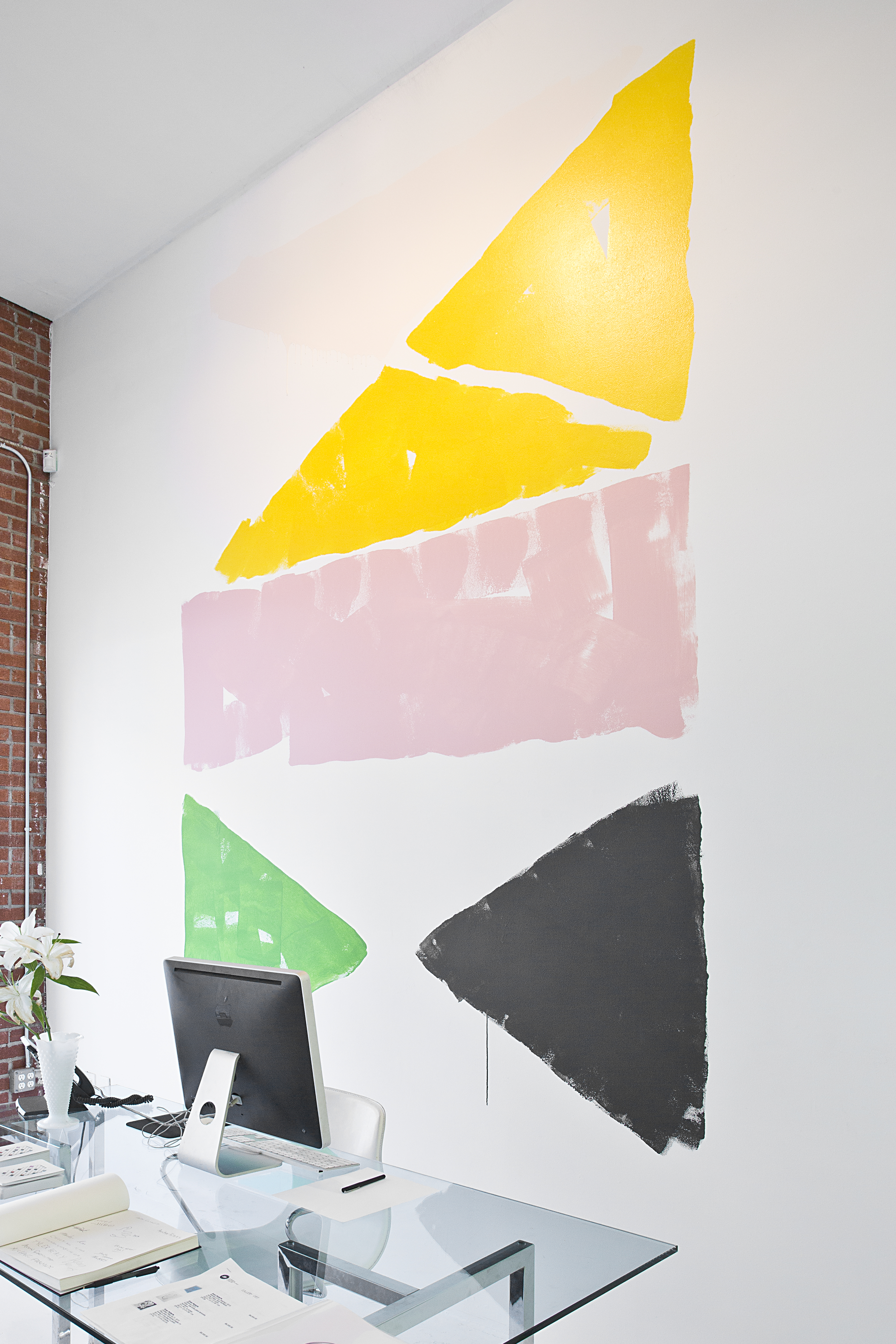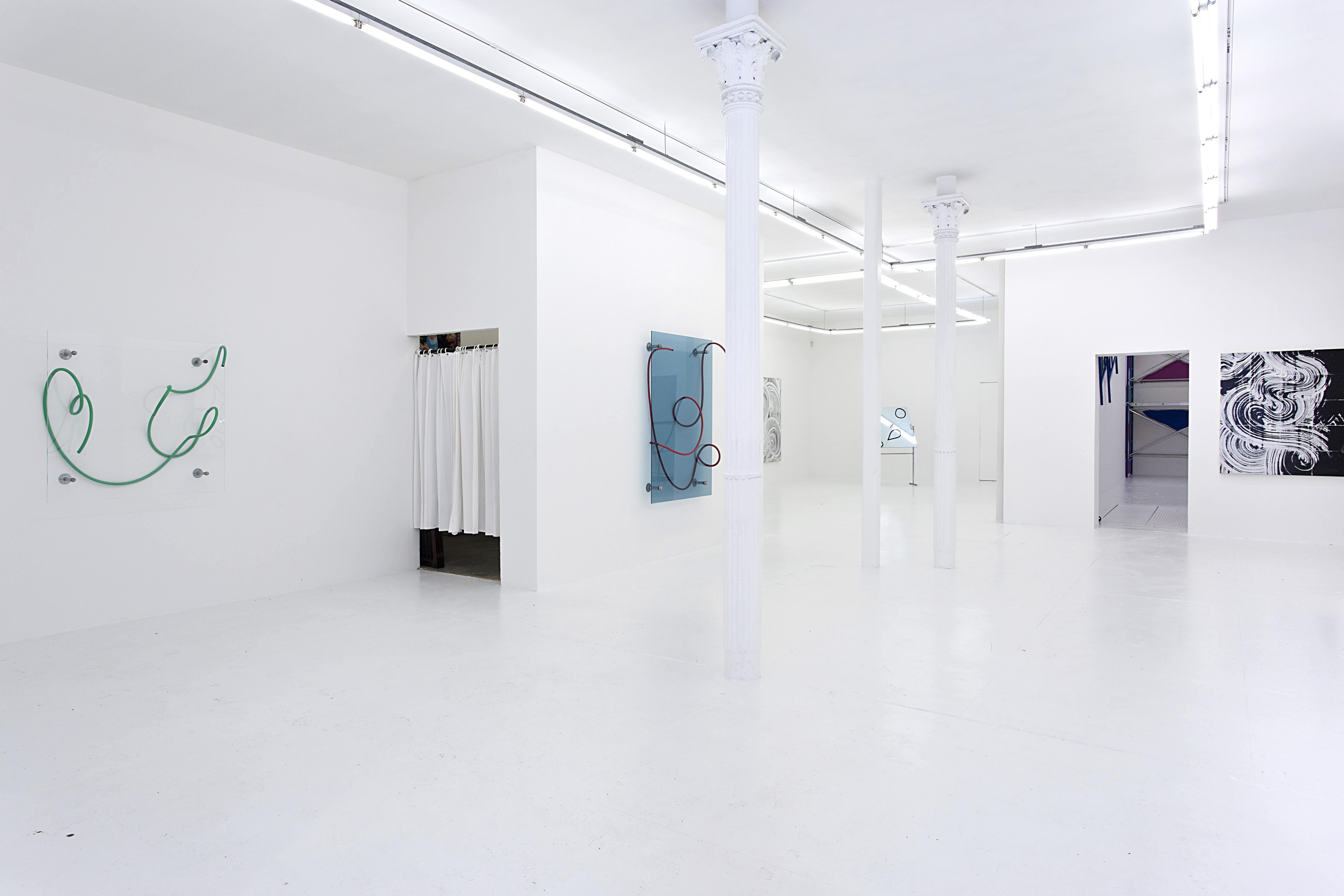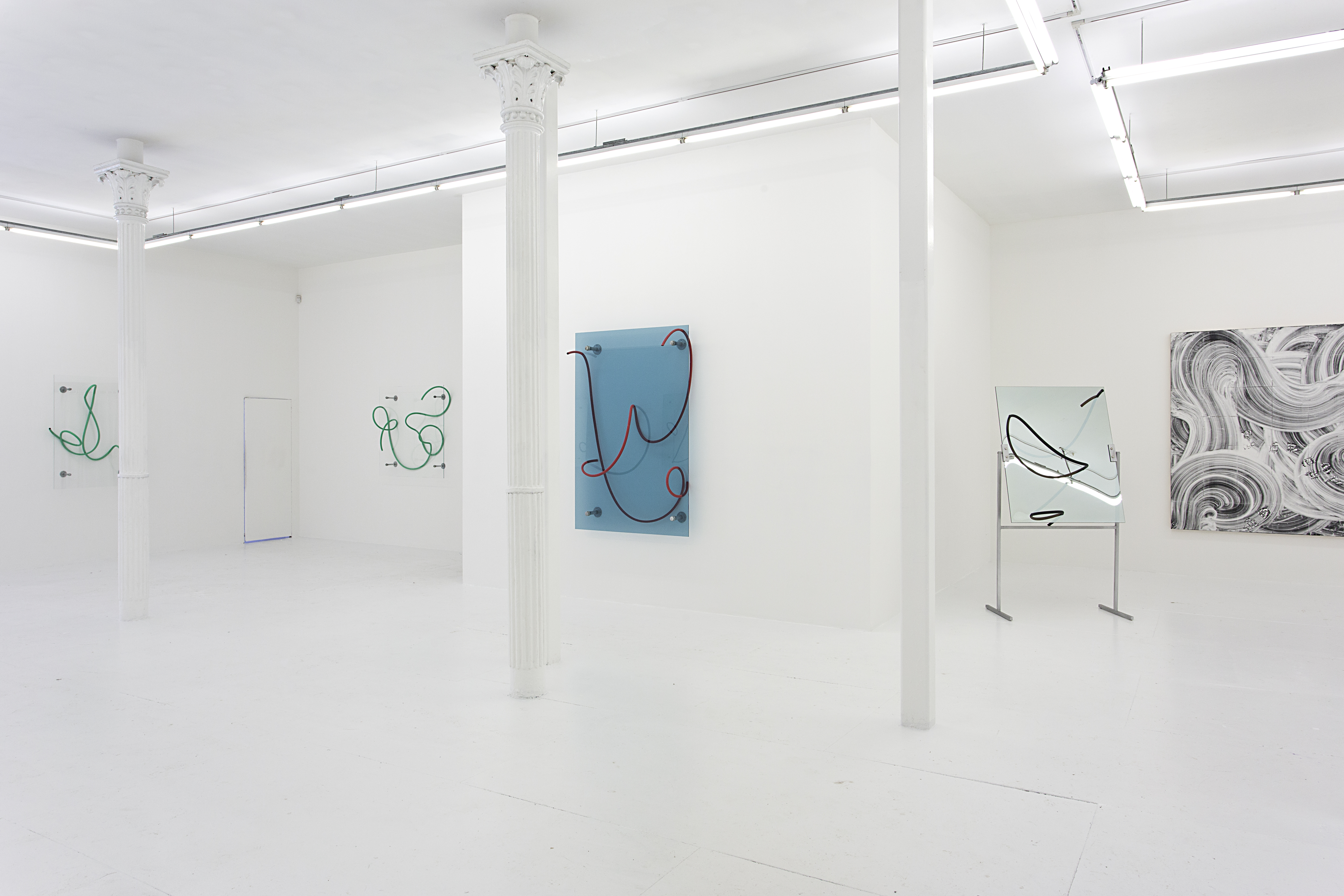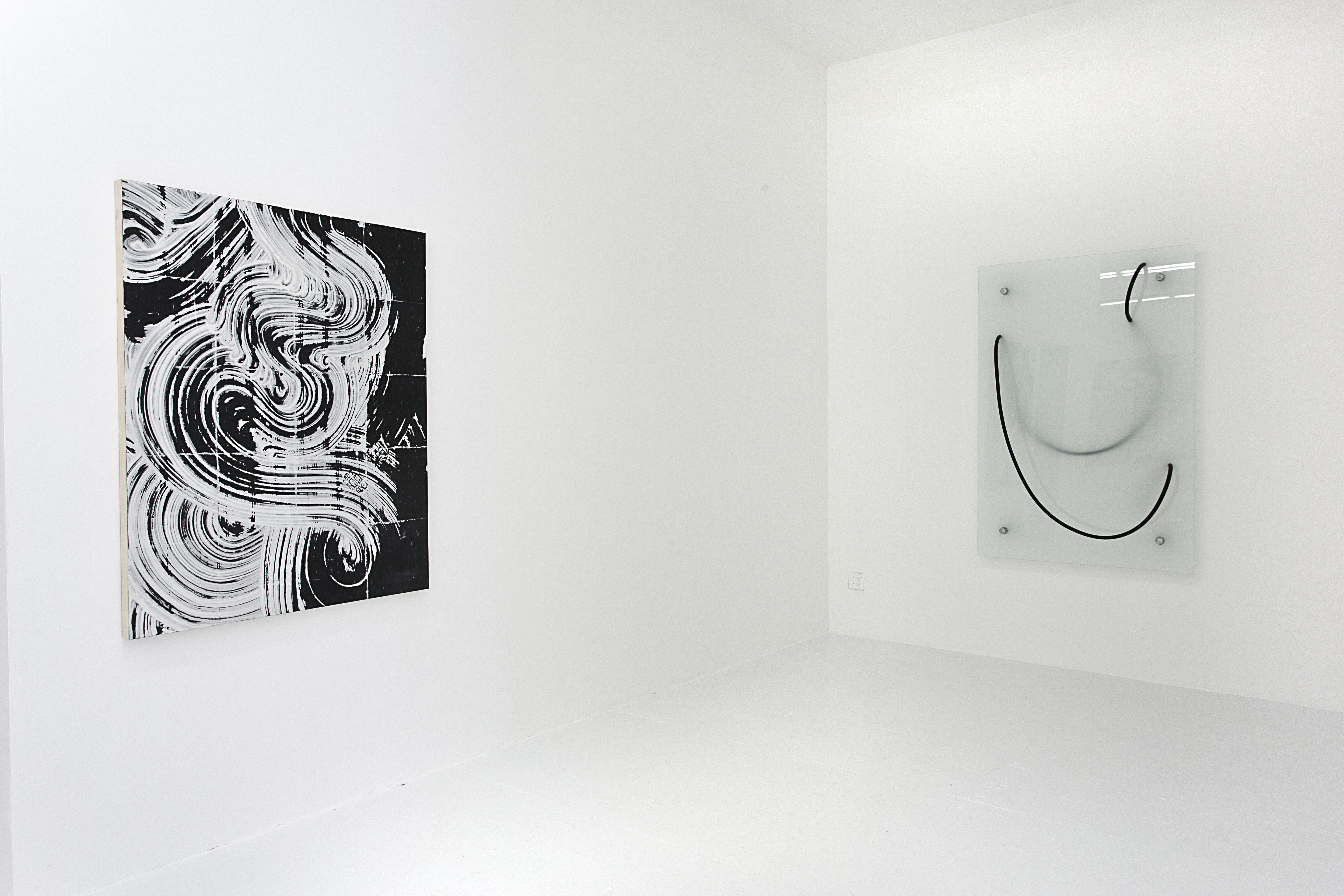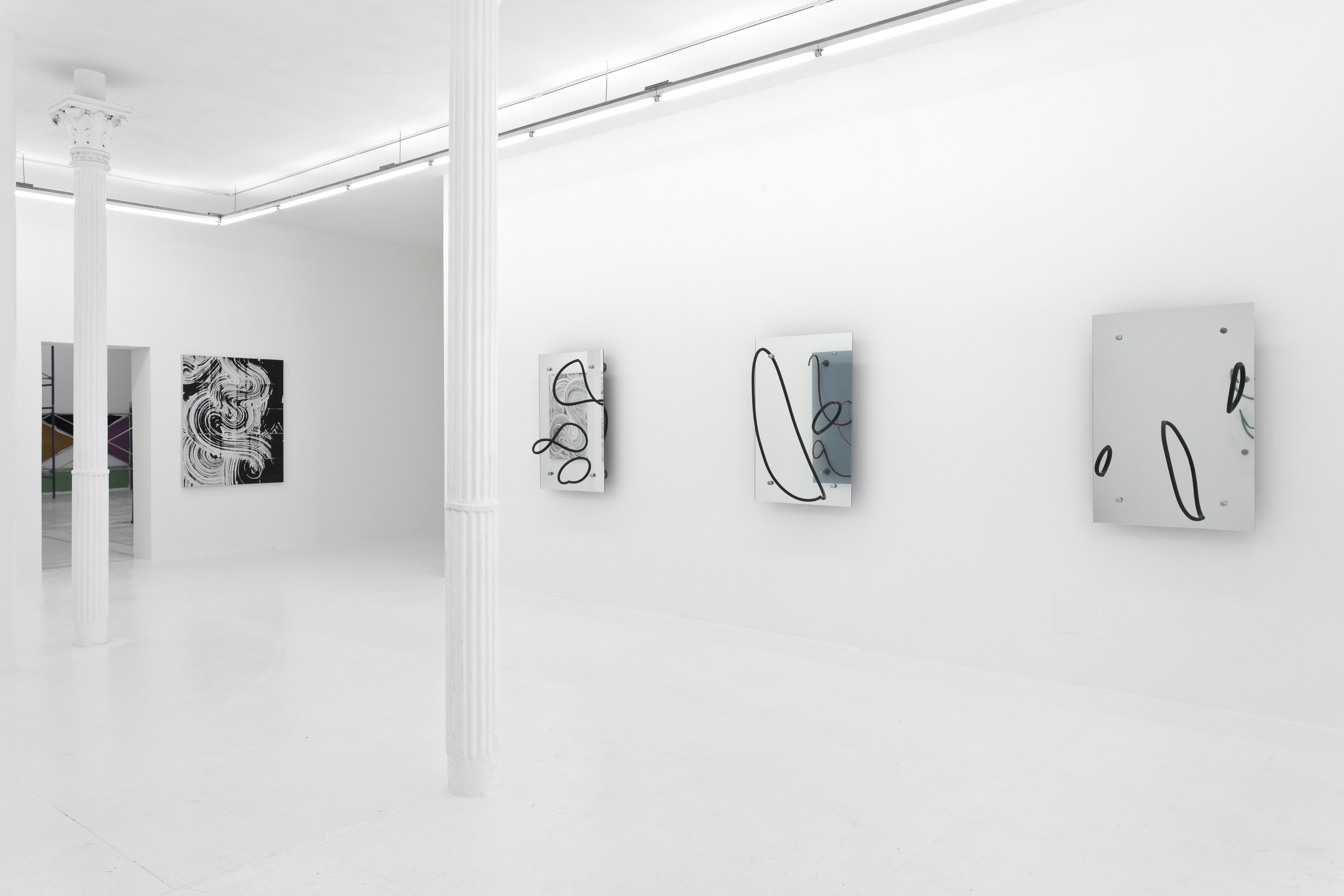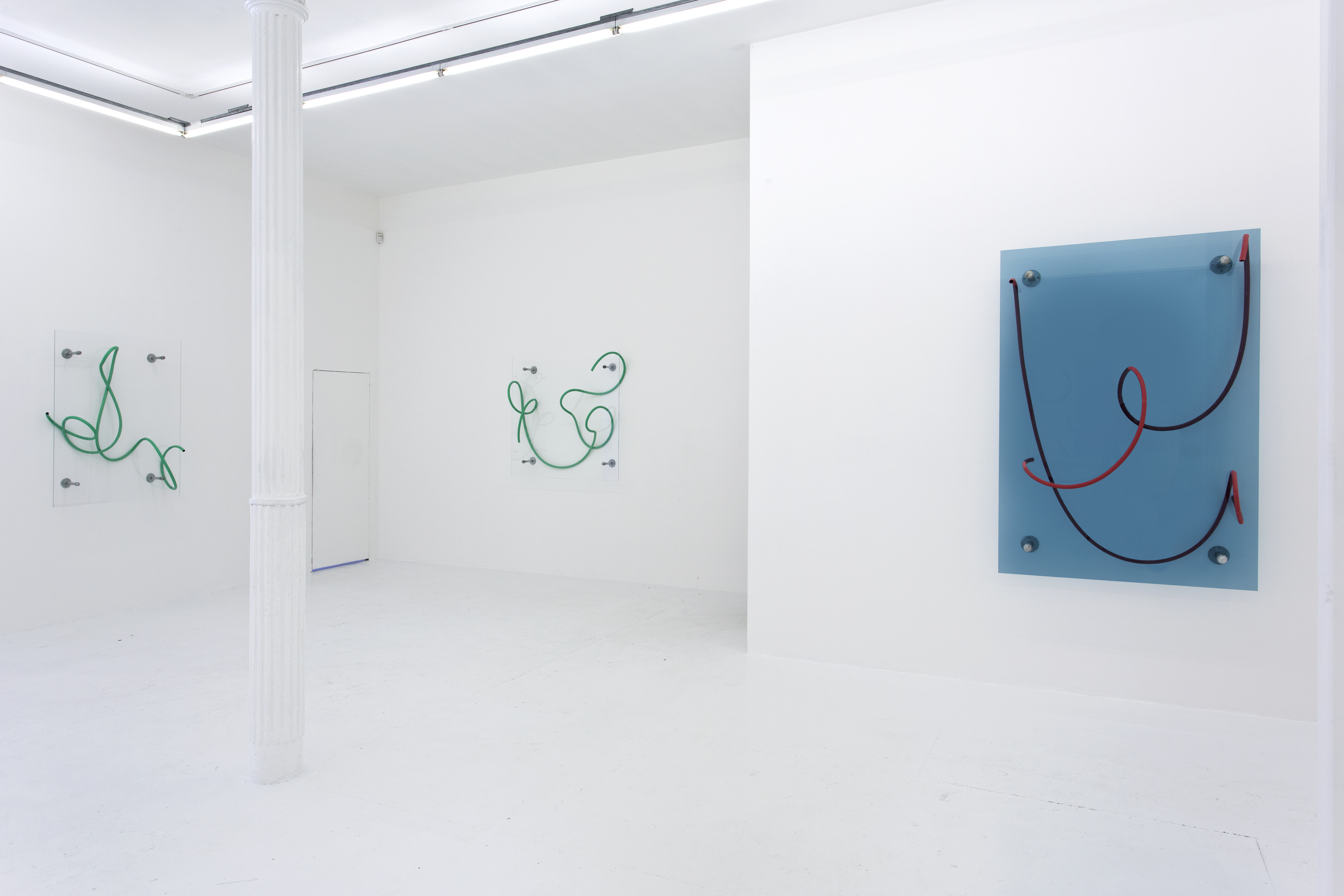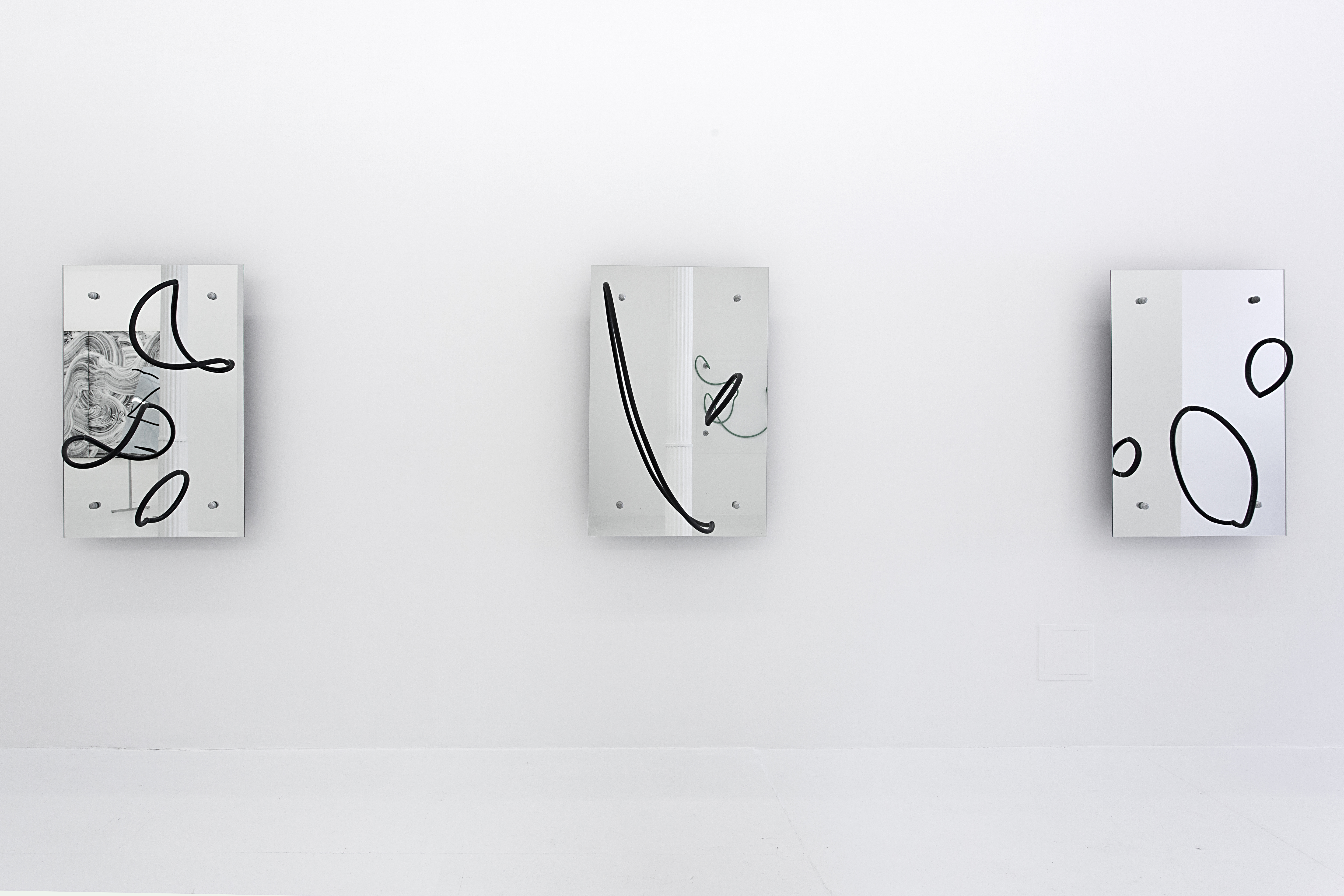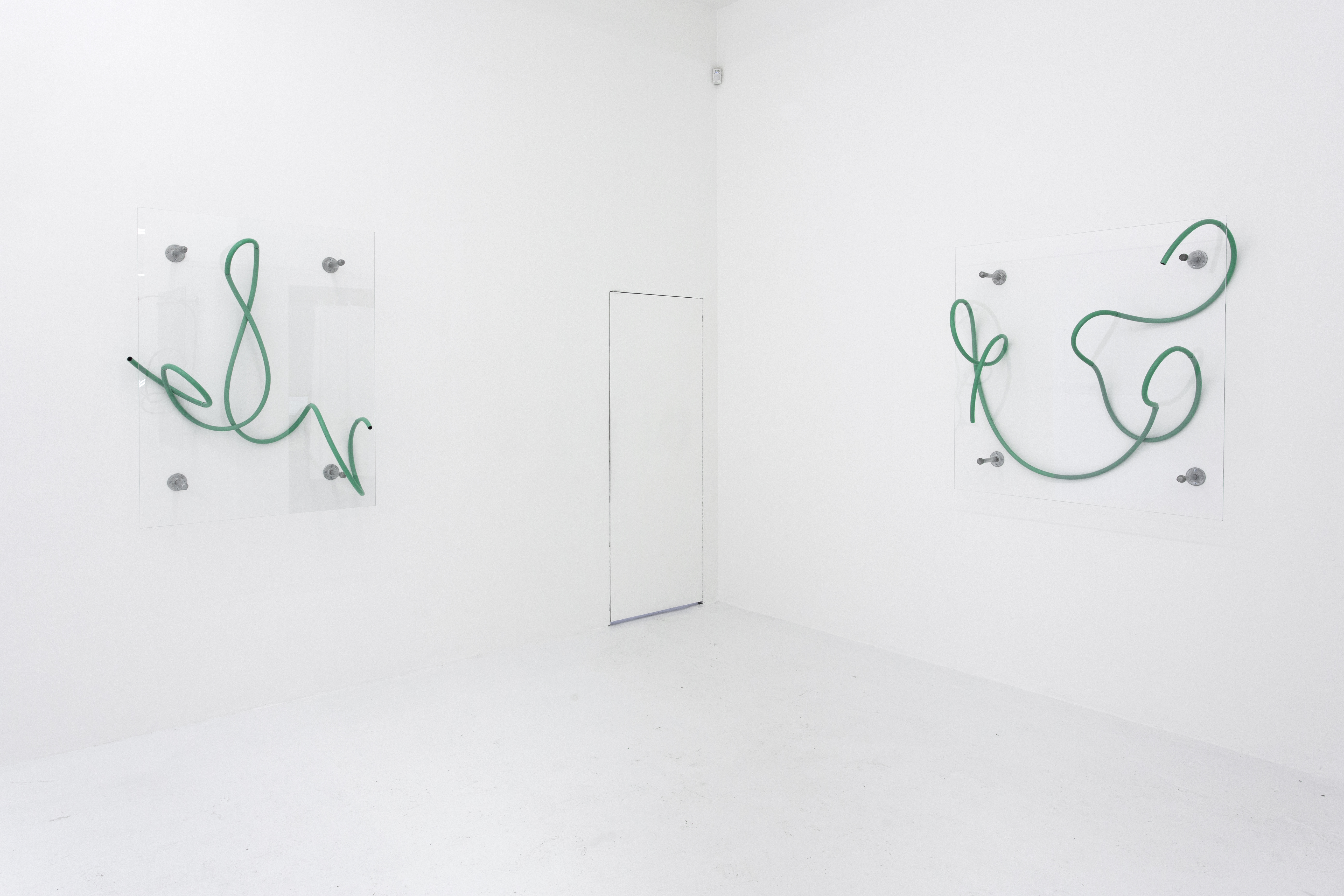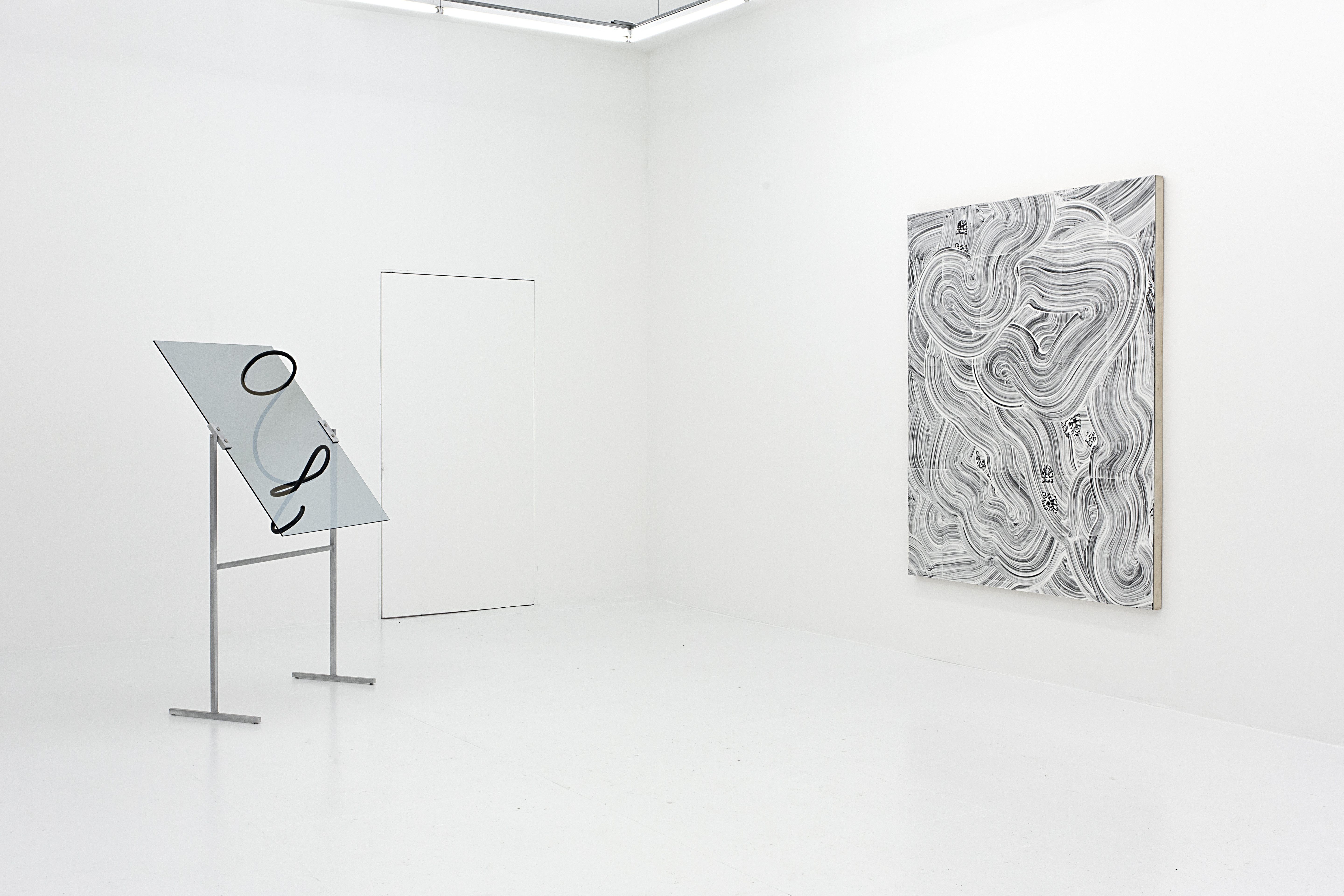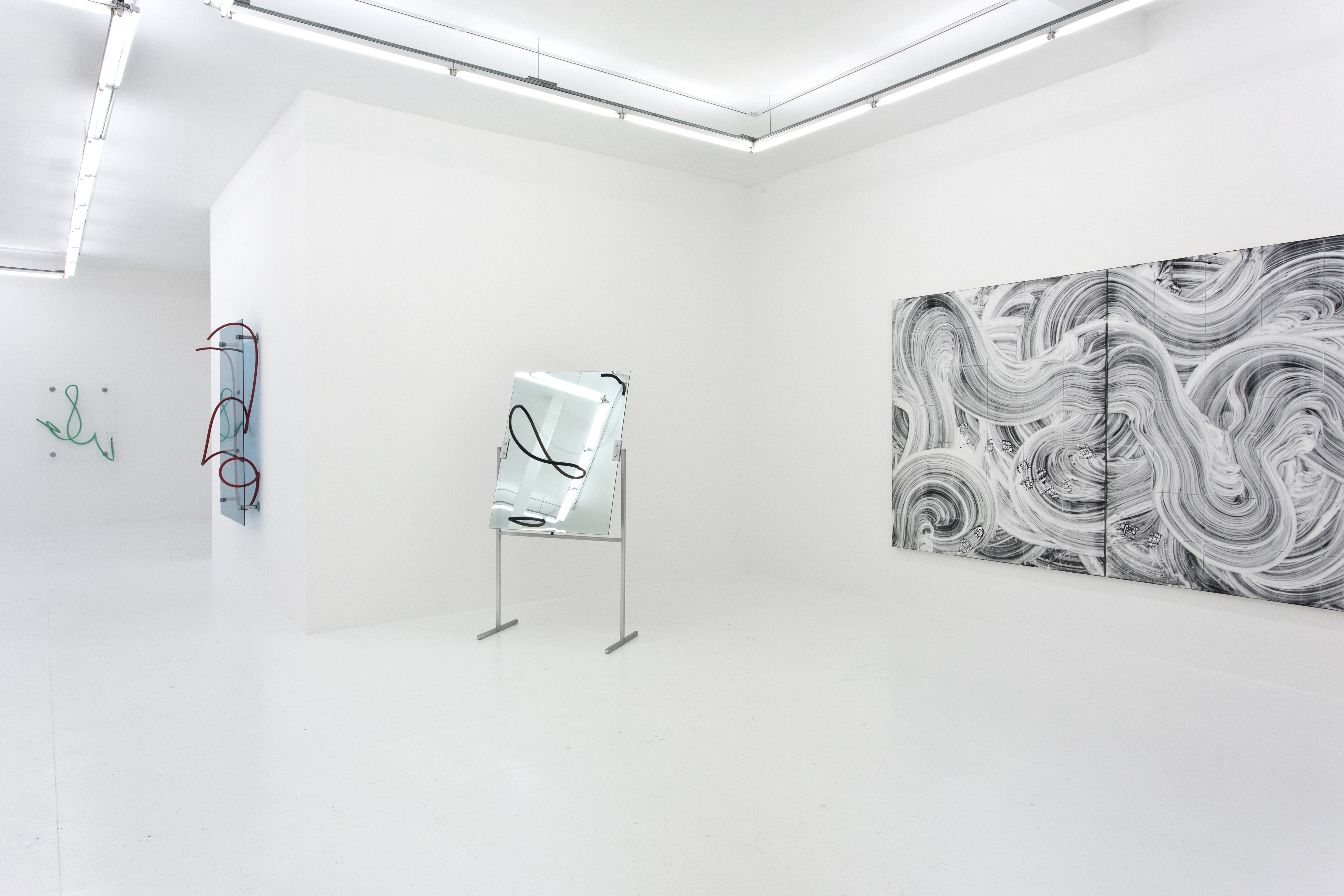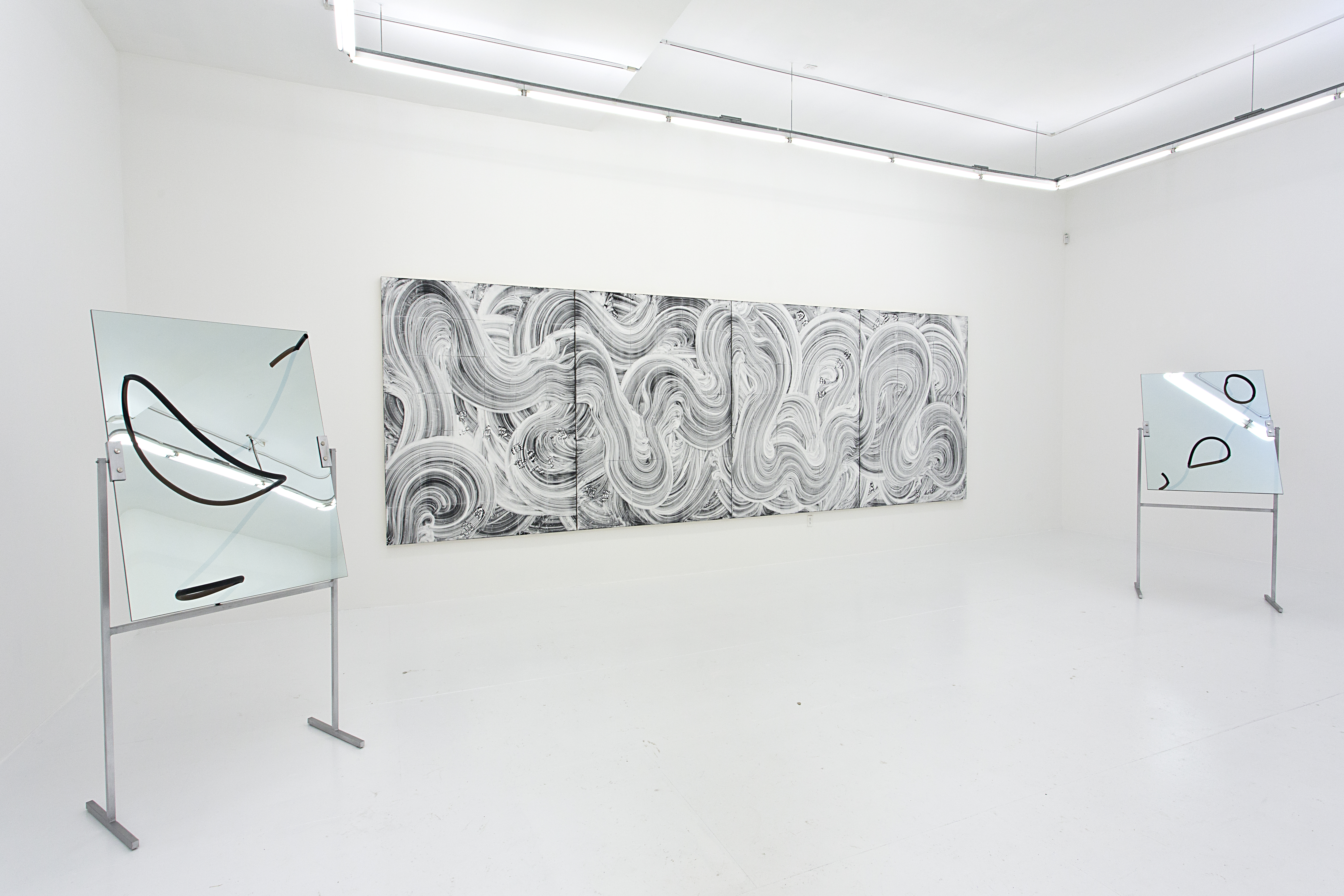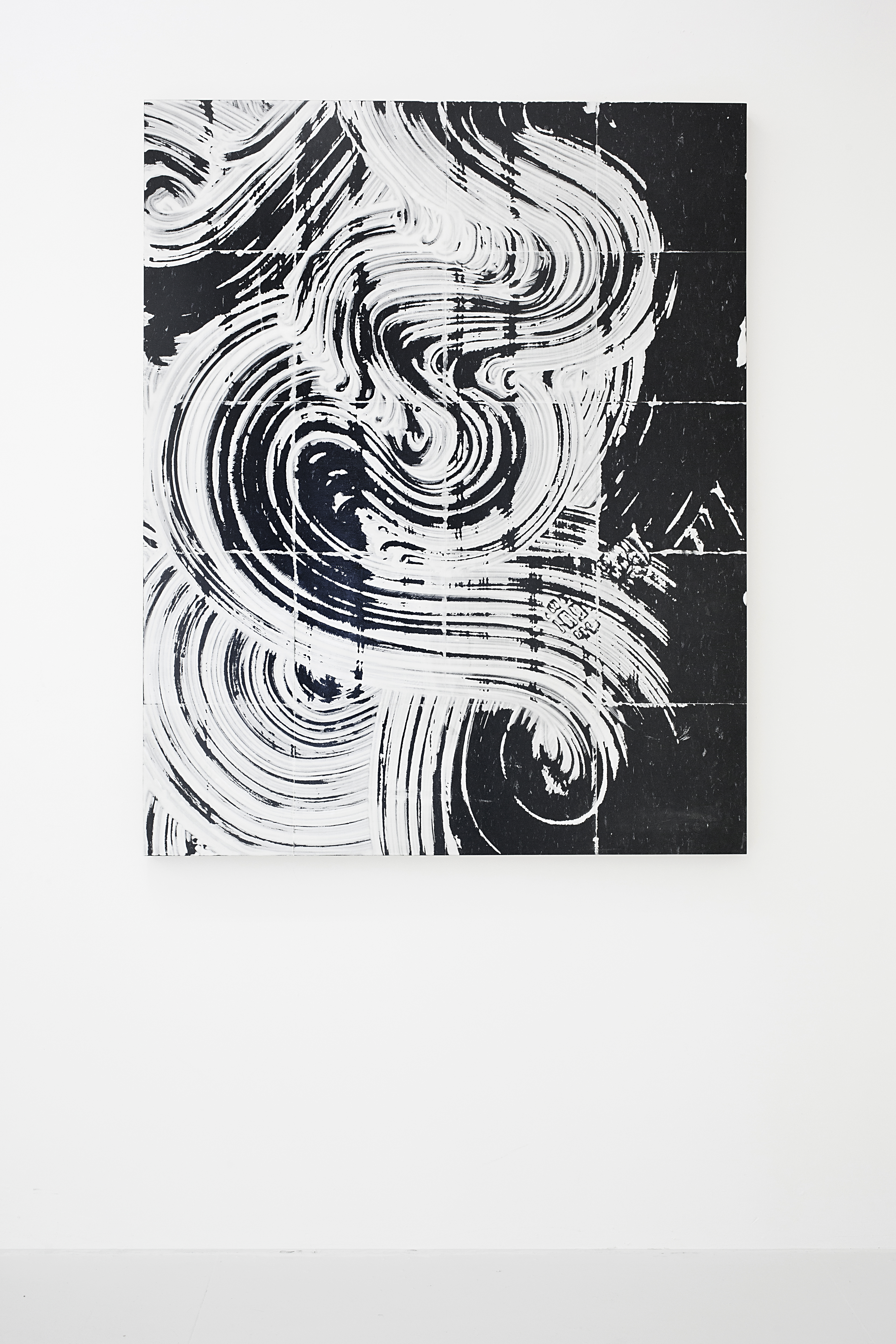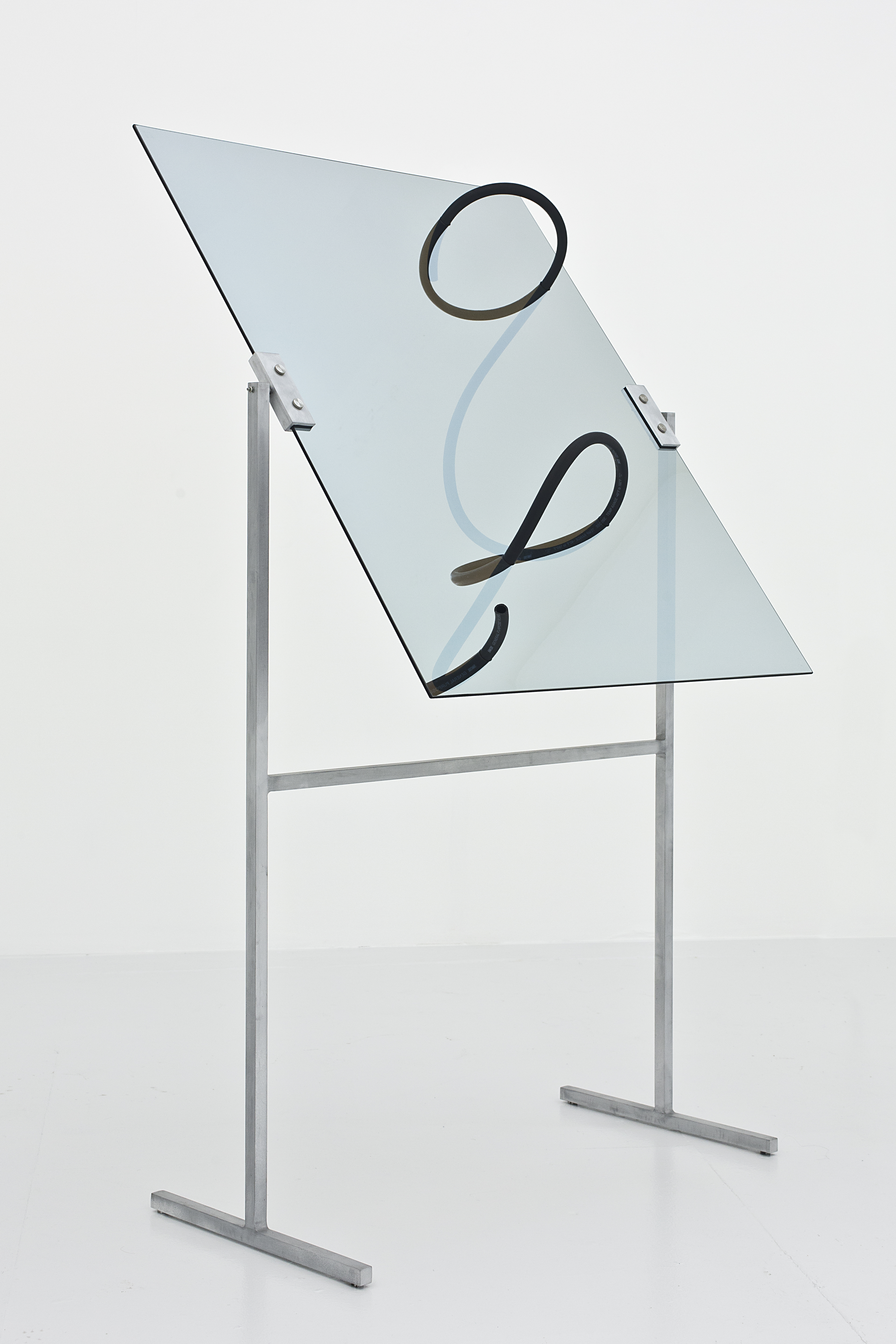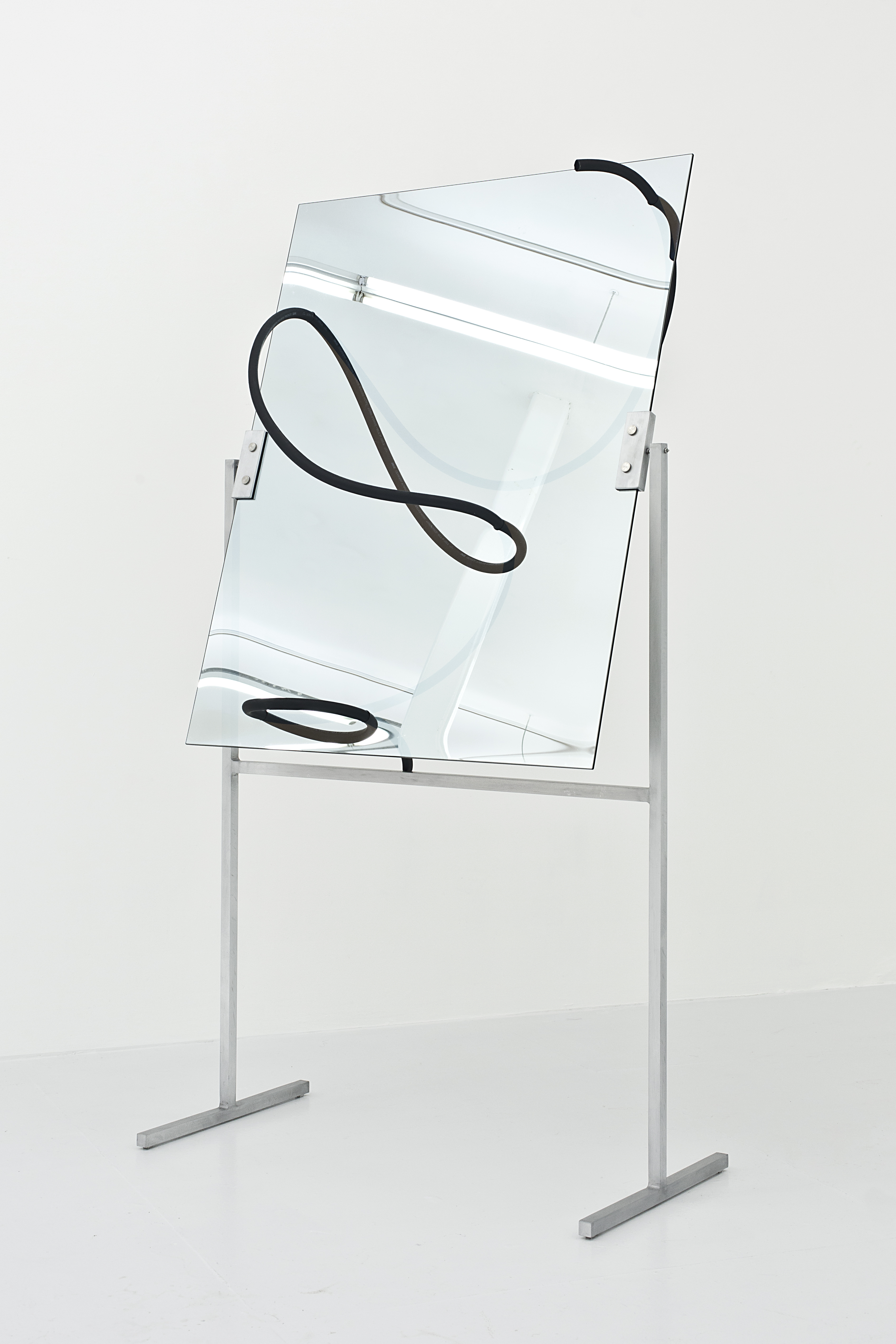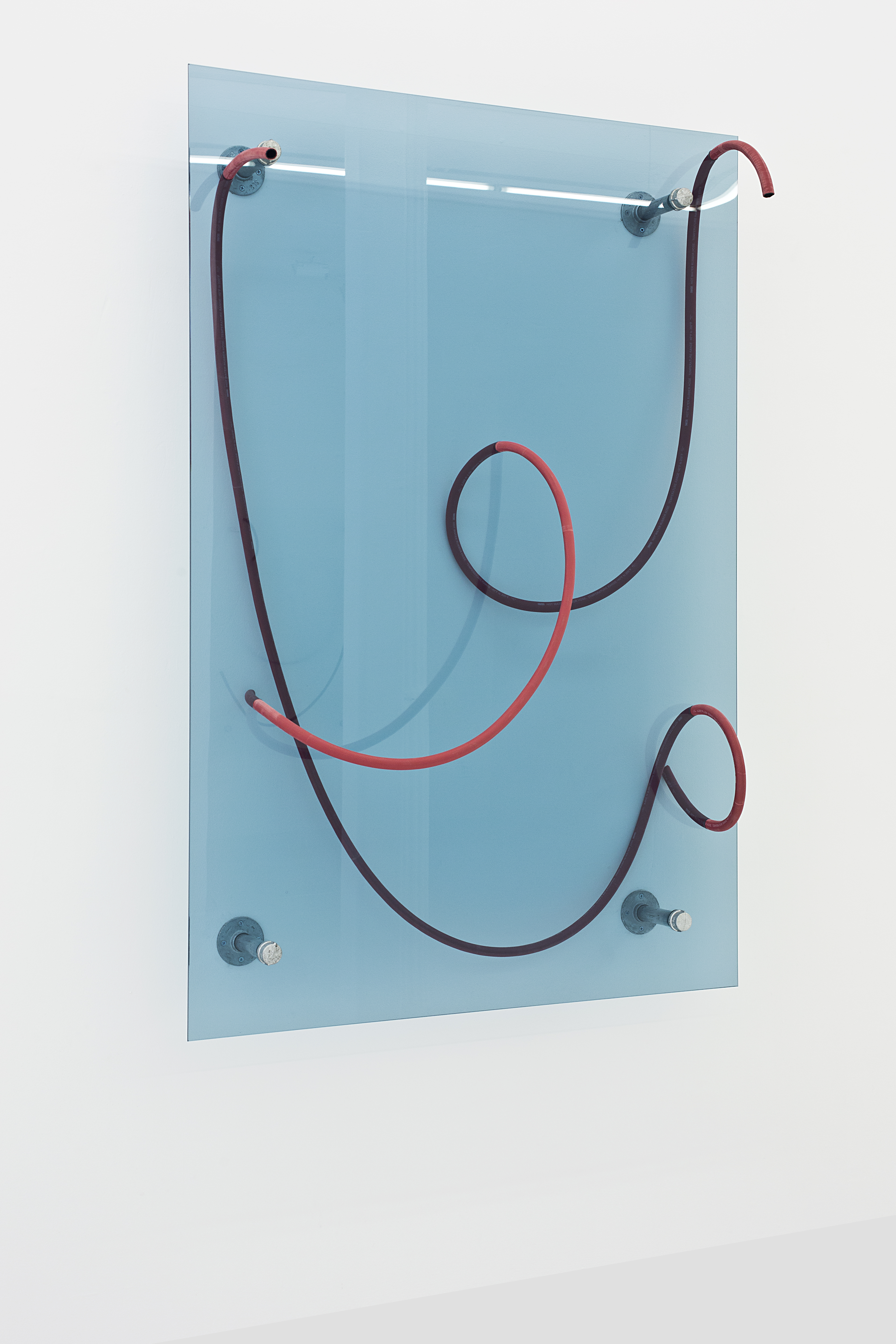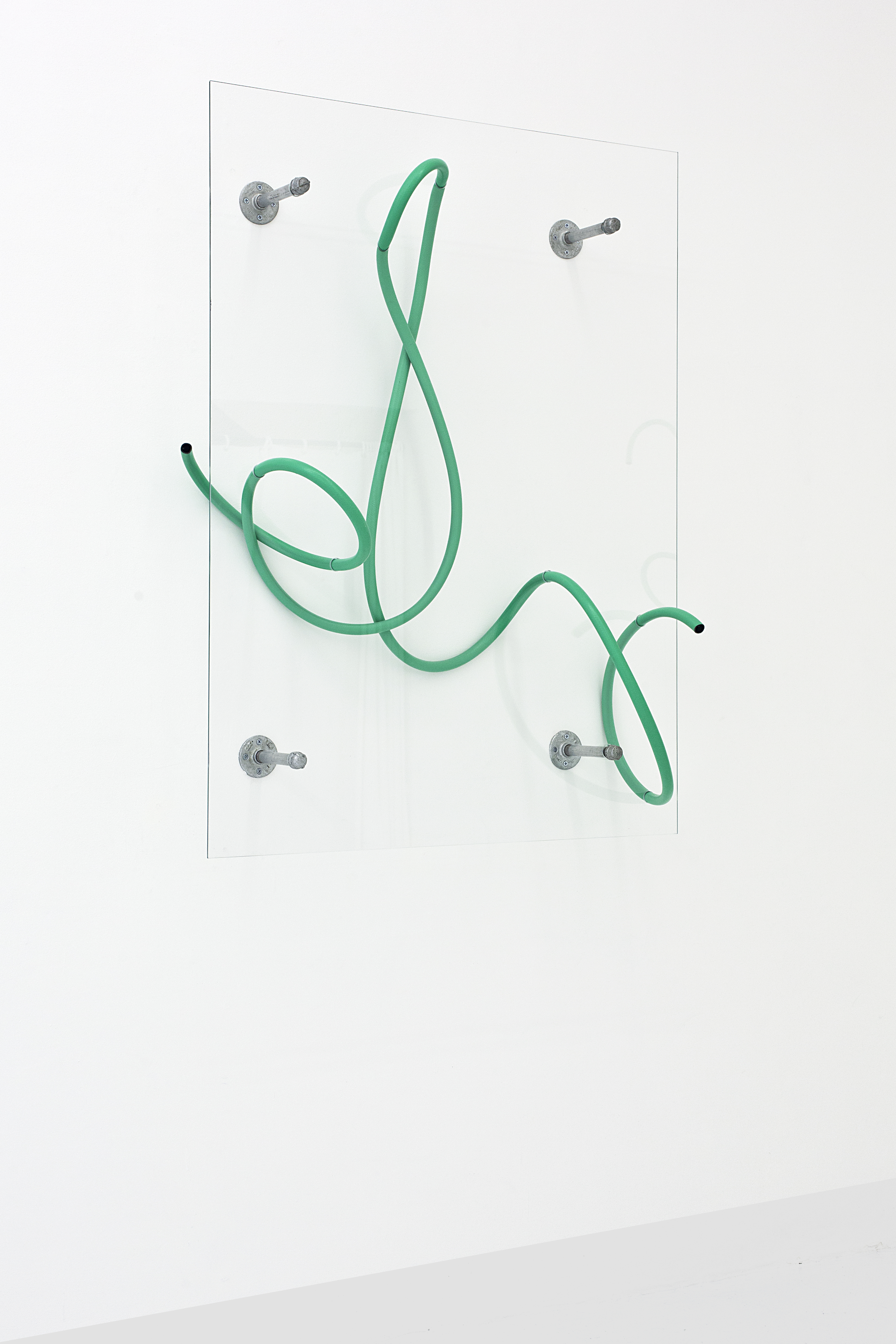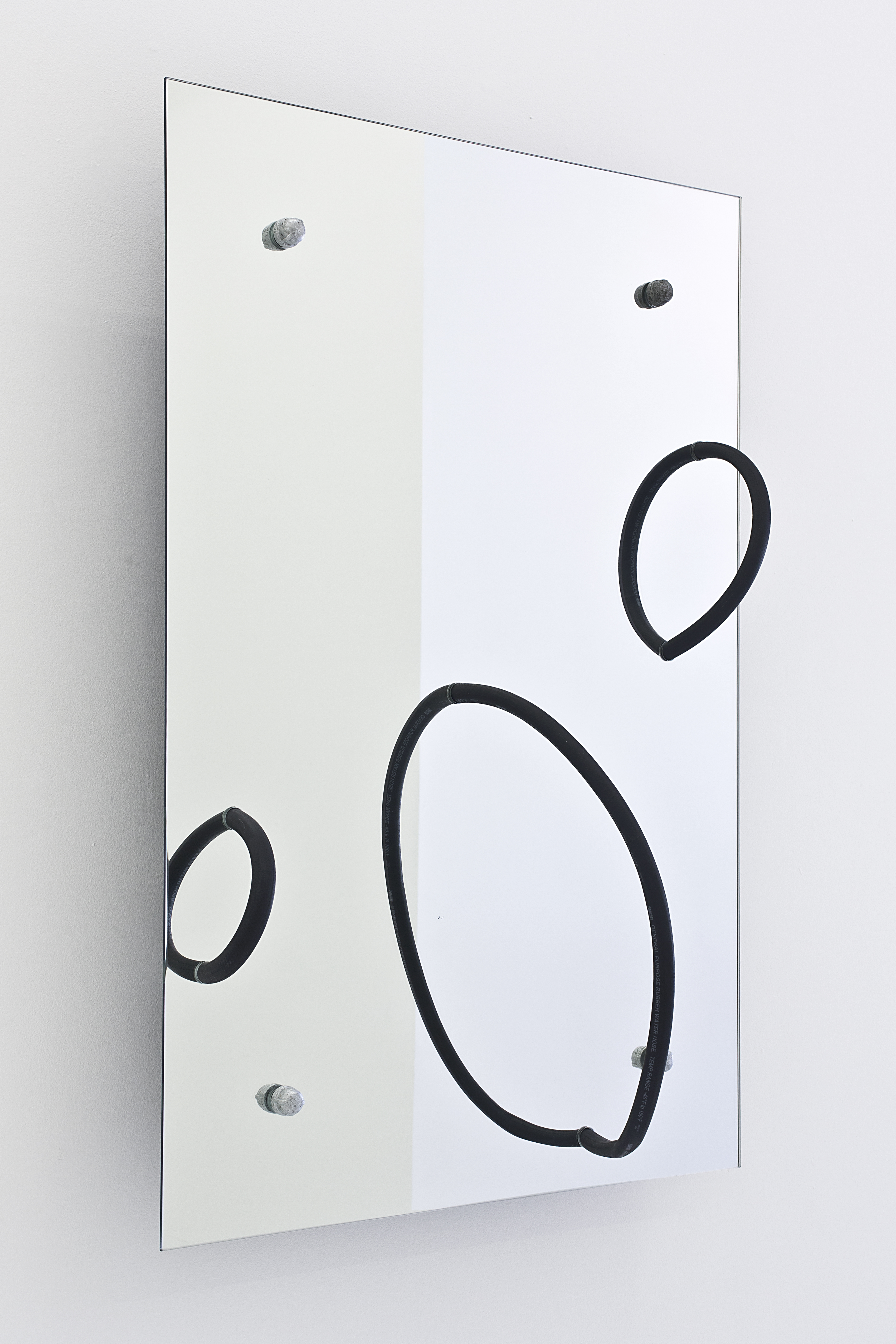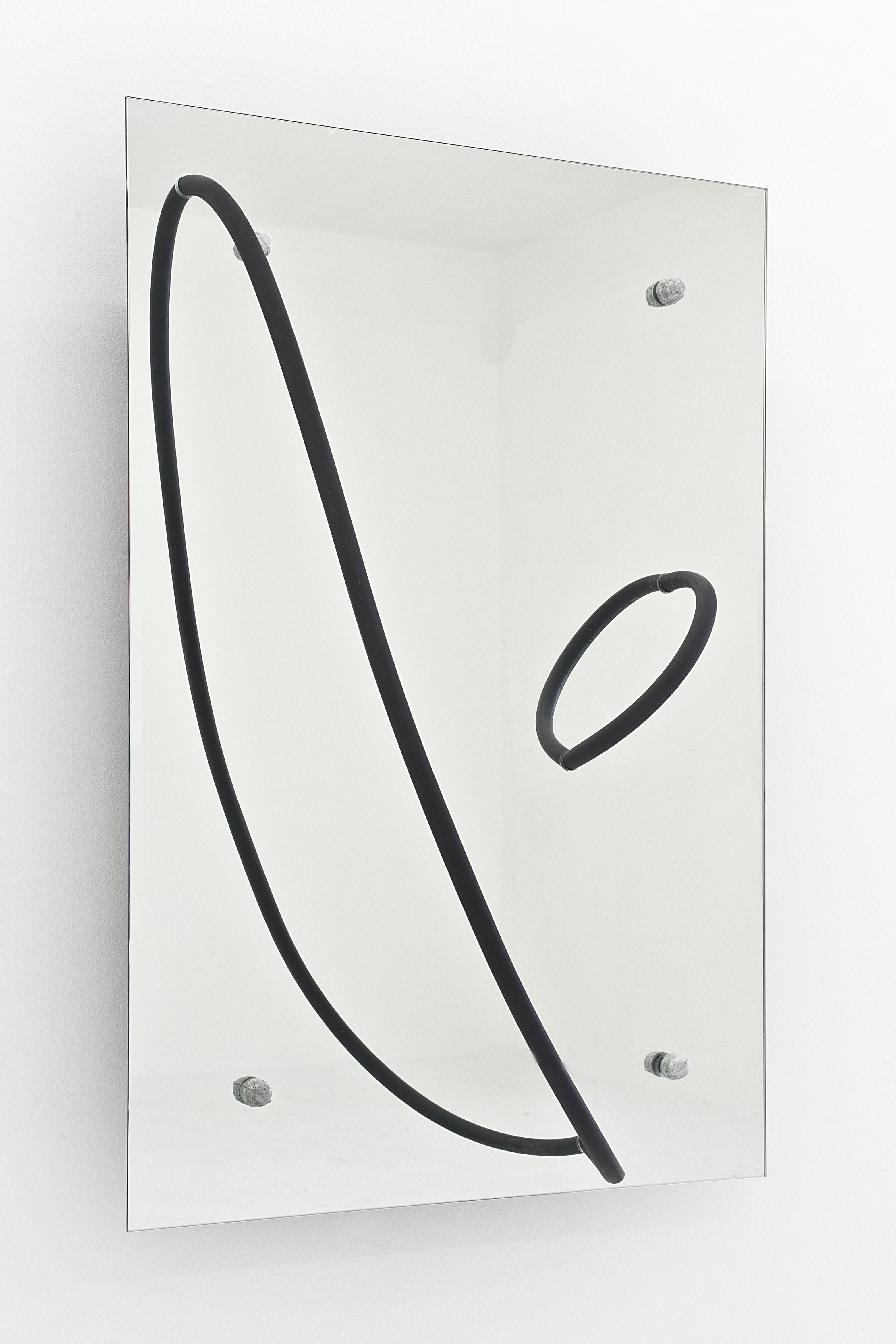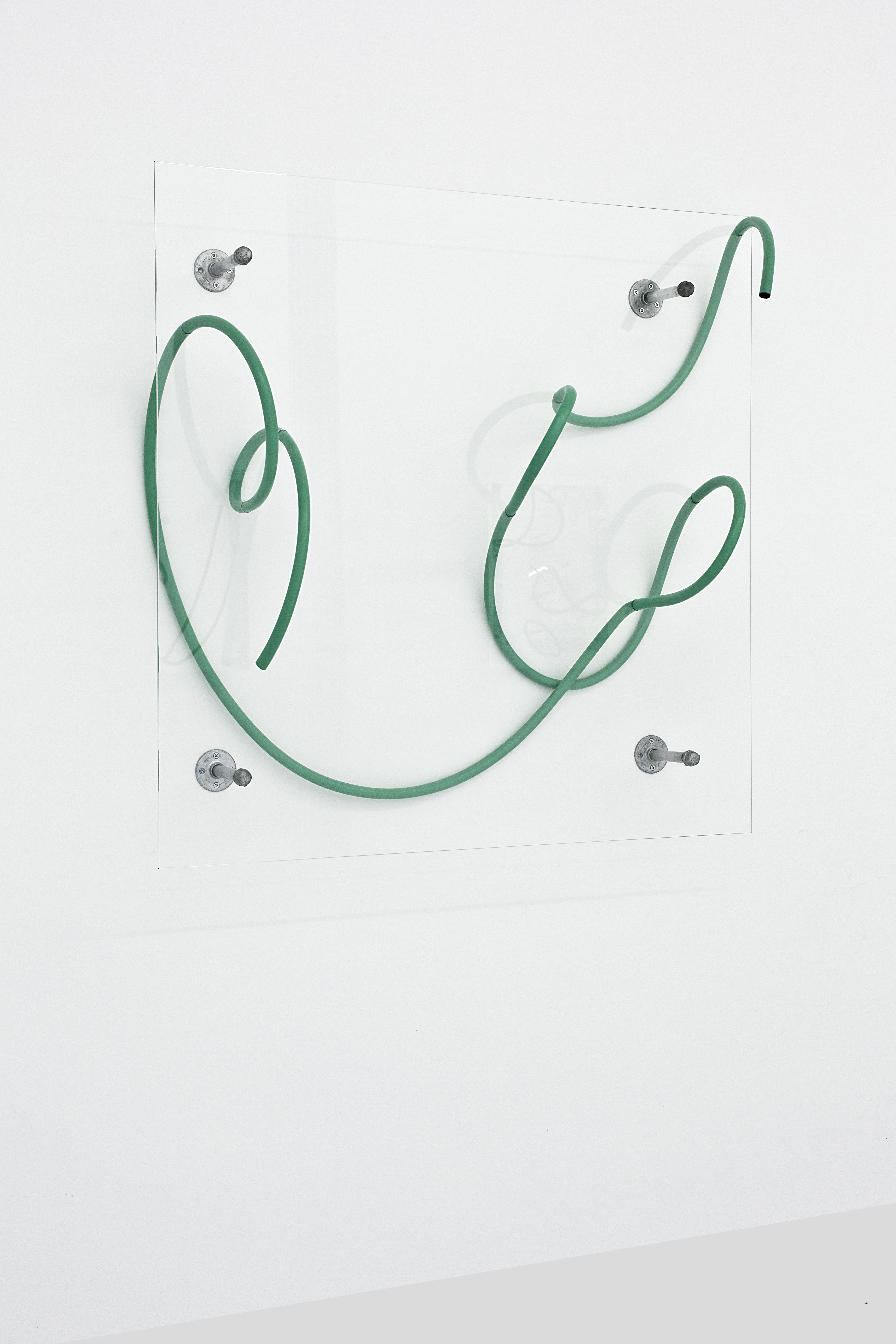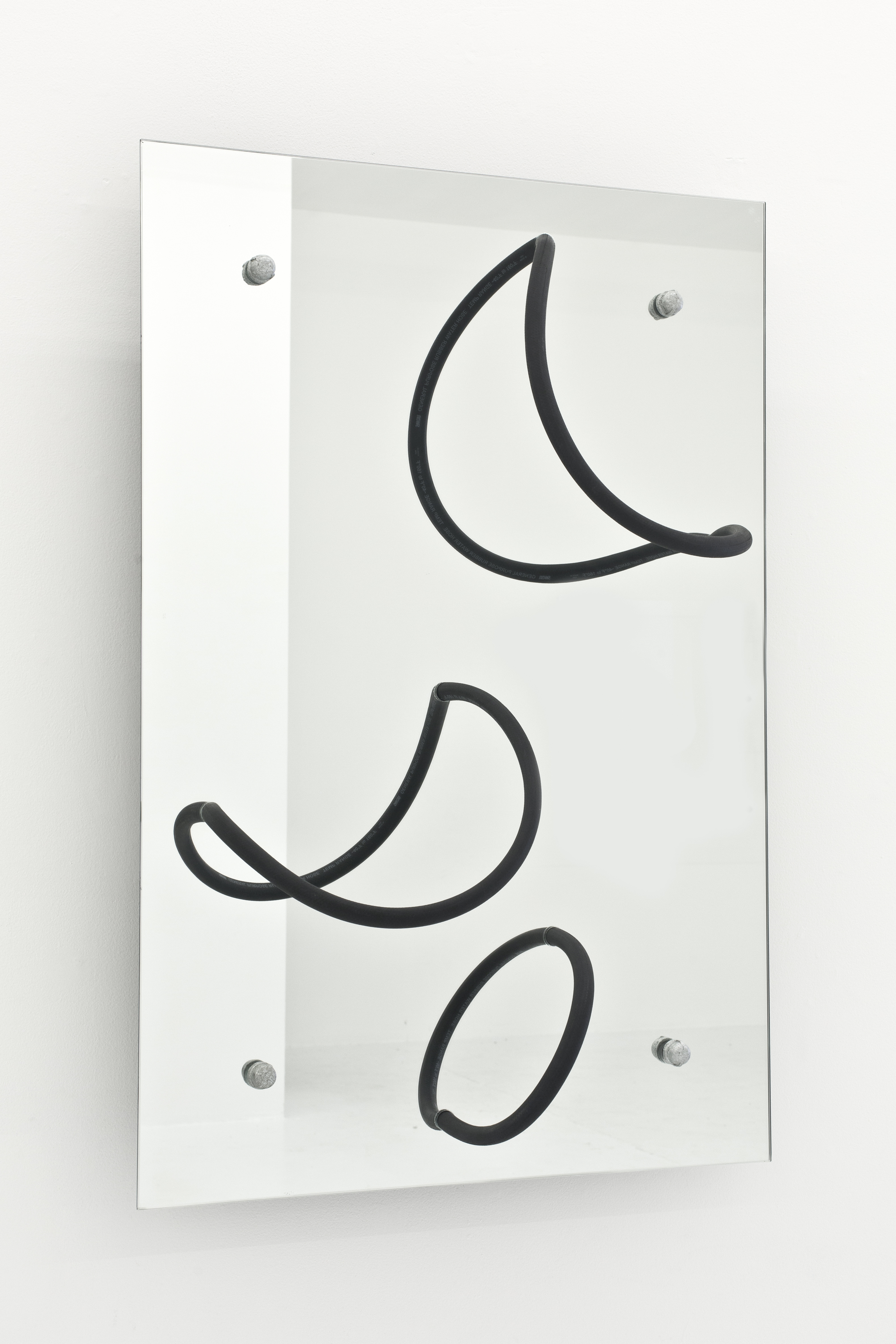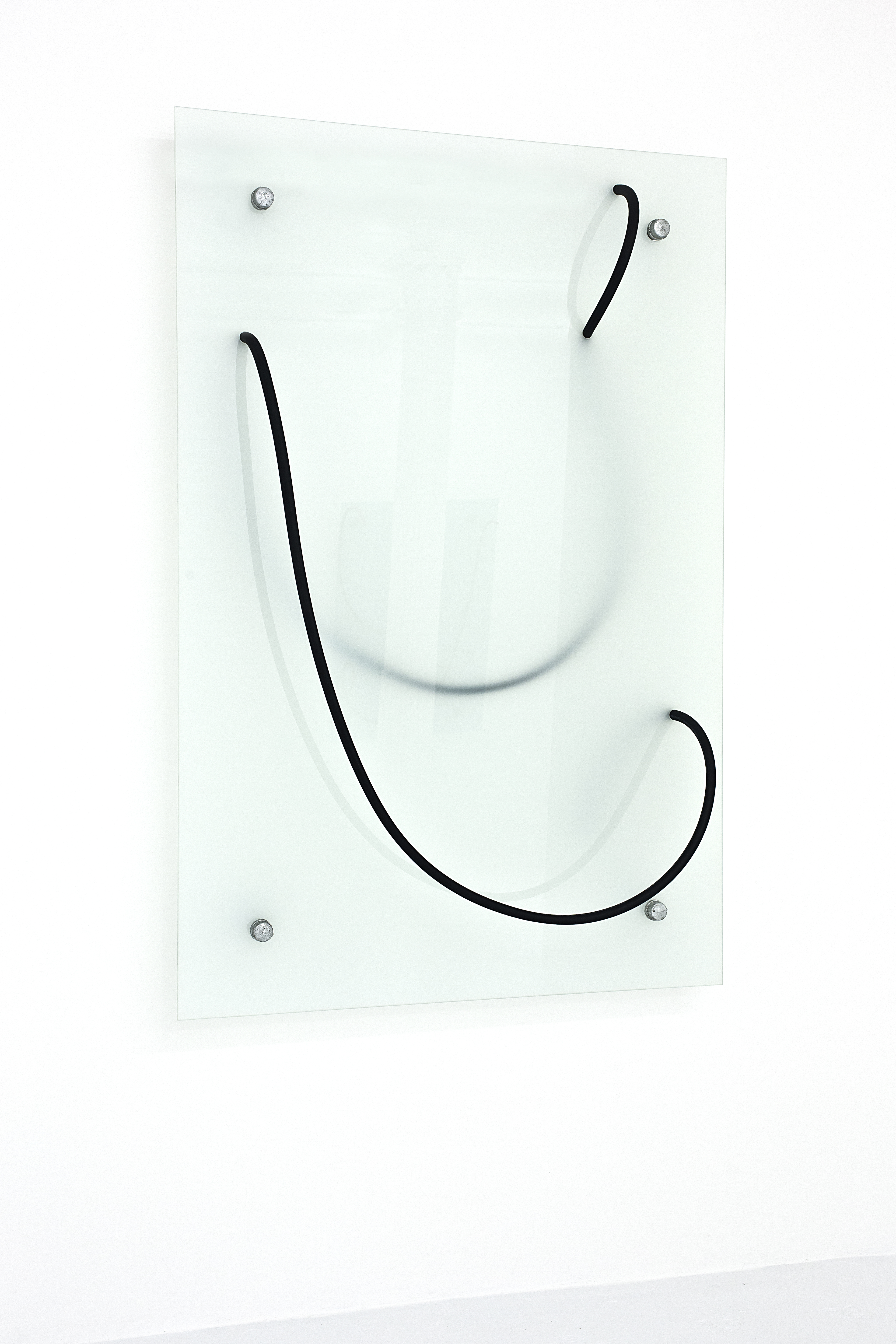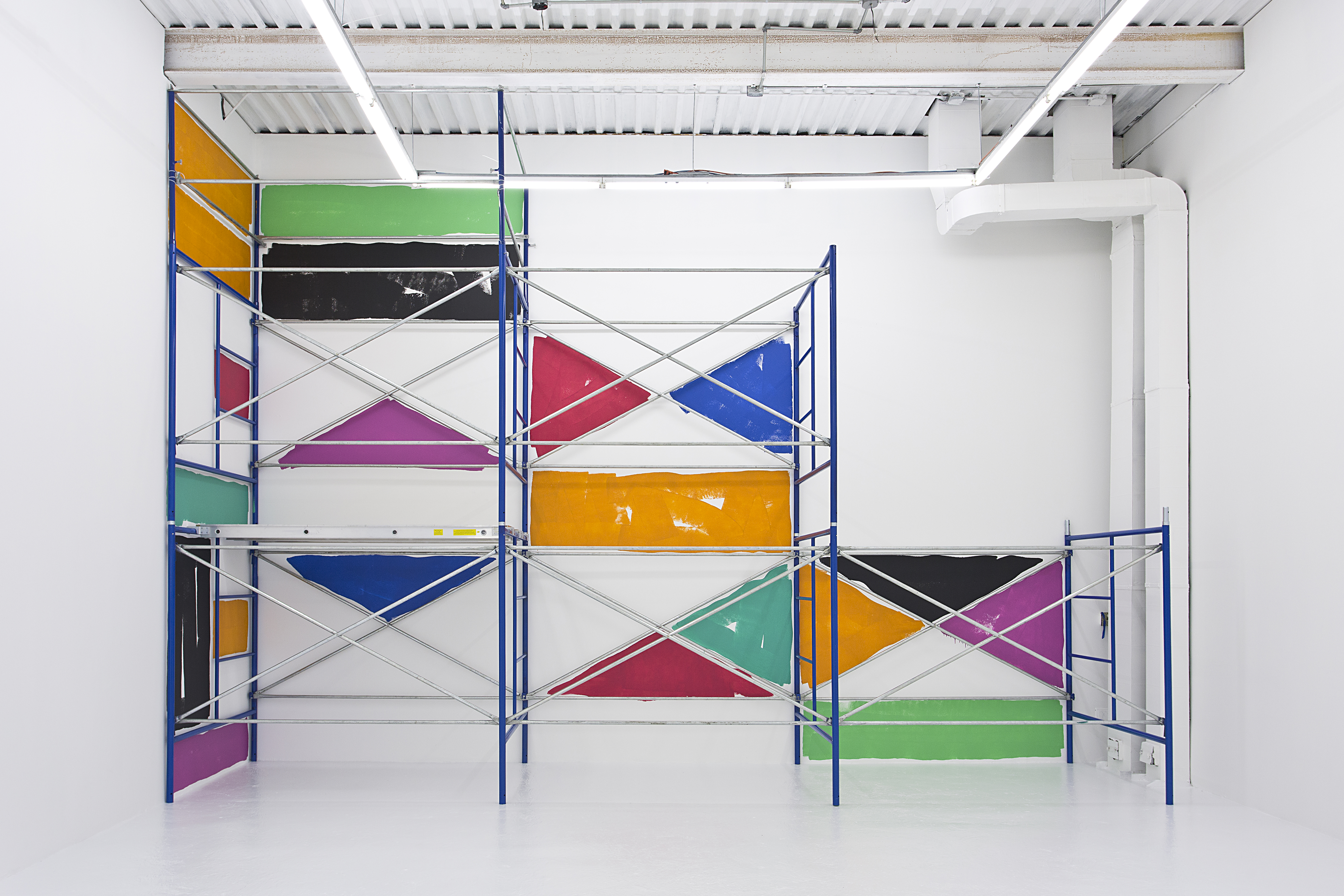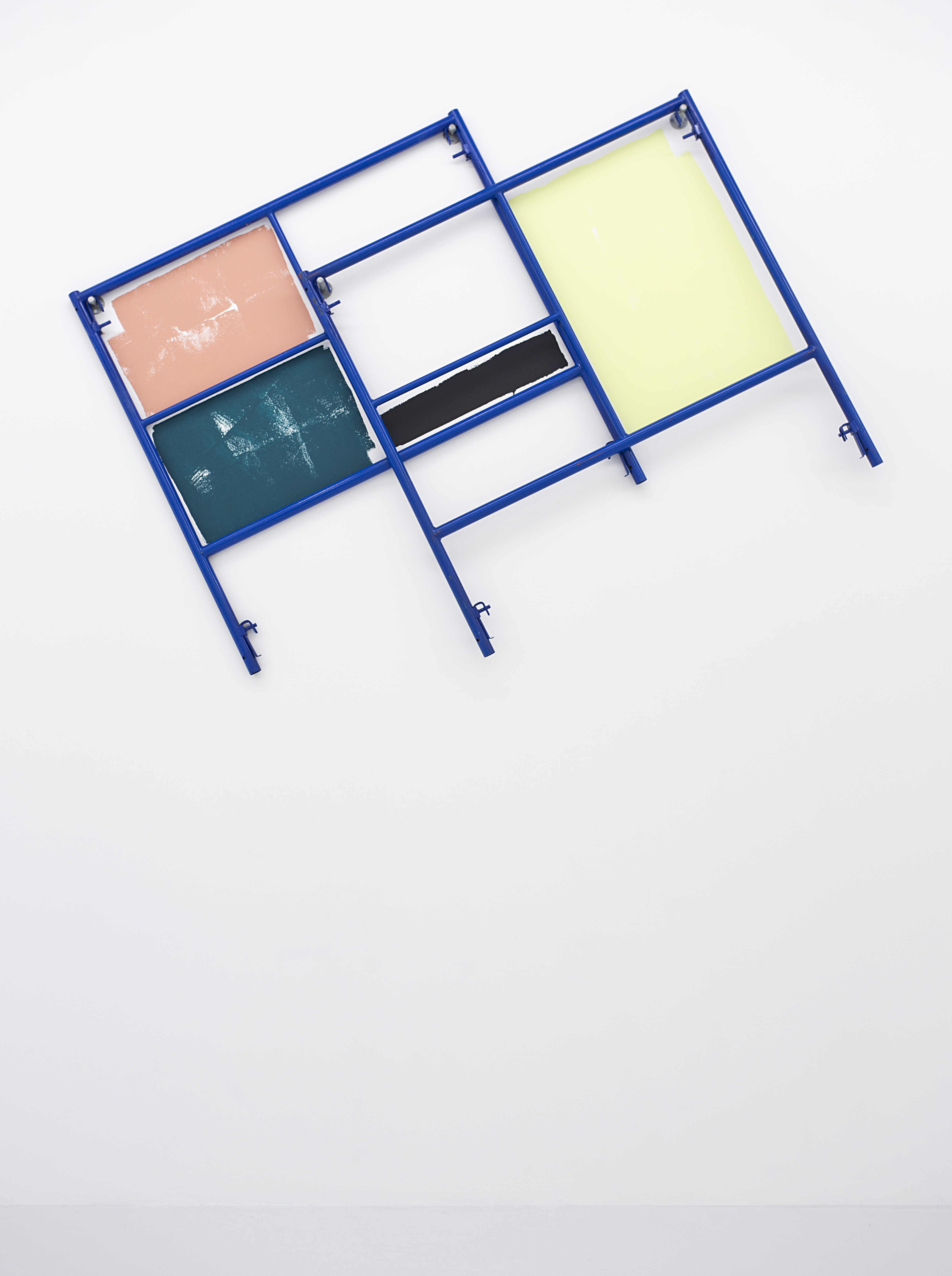The Hole is proud to announce a full-gallery solo exhibition by Evan Robarts. While Robarts has exhibited widely in group shows over the past few years, this will be his first major solo exhibition. The show will highlight three bodies of work by the material-driven conceptual artist, including scaffolding pieces, “line drawings” and “mop” paintings.
The “mop” paintings are made as you would guess, by the artist “swabbing the deck” of the linoleum-covered panel with a mop on the floor, leaving his boot prints as he backs up to complete the job. The plaster is dragged around the black surface leaving both mundane and dynamic areas of white, a record of the task and its motions.
Robarts calls the wall-works of glass and garden hose “line drawings” because in a way, he is drawing with the hose, and the holes in the glass through which it weaves are just supports to his drawing composition. Using starphire glass, mirror and blue glass as a spatial armature, the artist composes drawings with red or green garden hoses that take on a diversity of effects from the subtle differences in material and composition.
The scaffolding works will fill Gallery 3, stacking up to the ceiling, tipped over or hung on a wall like a canvas. For these works, Robarts riffs on Sol LeWitt wall drawings by using the arbitrary geometry of scaffolding parts to dictate forms of the paintings. The assorted rectangles, squares and triangles the industrial poles of the scaffolding make form a giant coloring book for the artist as he tries to paint within their lines.
Besides the pared-down, material-driven and intellectualized aspect to these works there is also a strong personal, warm or even humorous component as well that for the artist is particularly important. Robarts was drawn to these materials from personal experience and familiarity. After graduating Pratt in 2008 the artist worked as a superintendent for a run-down building in East
New York that was being superficially fixed up for sale. He did a lot of mopping, and duties like hosing down the sidewalk and repairing hot water heaters meant repeated and mundane interaction with other materials, many of which have found their way into his work.
The title “Run-of-the-Mill” is meant to evoke both the quotidian and ordinary tasks captured here in artworks, the role that work plays in a “work of art”, and also perhaps the anachronism of the phrase itself. Mills are lost to the industrial past and are no longer the vital center of towns and villages, representing a building and a way of life that no longer exist. The artist reflects often on the movement of people and communities in New York City—where artists often form the climax community before gentrification occurs–and meditates on the forces of preservation and improvement interacting with real people and their lives.
The scaffolding works are perhaps the series that focus most closely on those themes of preservation and improvement, as scaffolding can be a sign of neighborhood rejuvenation or neighborhood gentrification. Temporary structures meant to allow people a convenient position to do repairs, they often form a chrysalis around a city building and months later are disassembled to reveal the butterfly. It can mean the destruction of a historic old sign or the refurbishment of a beautiful cast iron façade, but in NYC it almost always means relentless improvement, sanitization and homogenization.
This resistance to the driving inevitability of modernization is something Robarts shares with his favorite art historical movement, Arte Povera. Where artists at that time felt modernity threatened their sense of memory and personal history, Robarts is perhaps aware as well of the class-based nature of the sanitization of New York City that forces ever-outwards blue collar workers and all but the most financially viable contemporary artists. If no one but the uber-rich can afford to live in the city, where will the experimentation and innovation of untested young artists take place?
Regardless of the struggles over having enough “room to work” in the city, these works seem to be more fun than the chores they come out of. The creative mind applied to materials and processes of the conventionally laborious here yields excitement and even humor. As they say, if you find a job you love you will never work a day in your life.
Robarts (b. 1982, Florida) graduated from Pratt with a BFA in sculpture in 2008 and has exhibited recently at Balice Hertling, Bryce Wolkowitz and Vigo Gallery, London. He has also exhibited work in the Margulies Collection at the Warehouse in Miami and with The Still House Group in Red Hook. He lives in Brooklyn and works in New York City.
